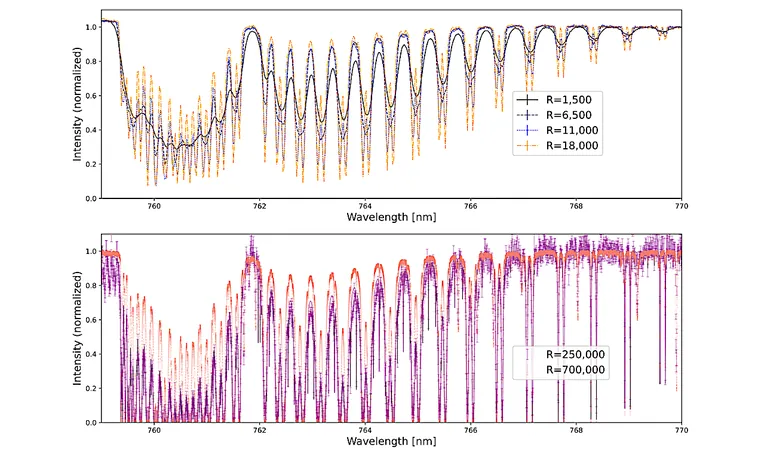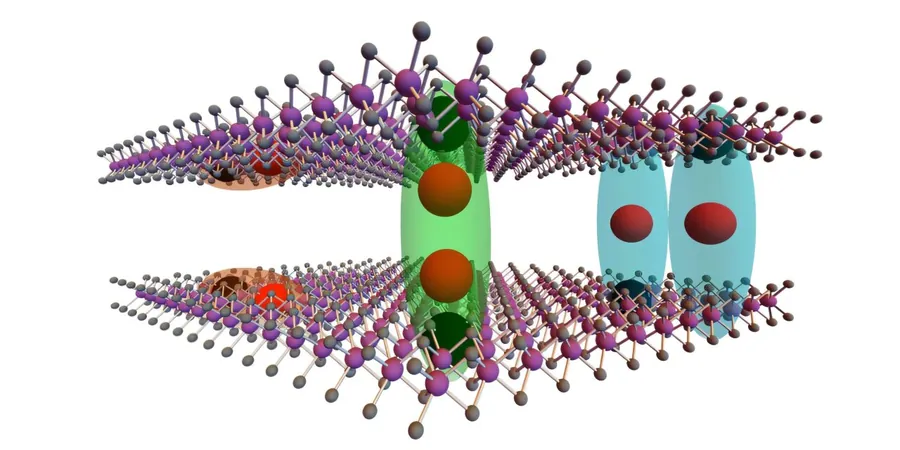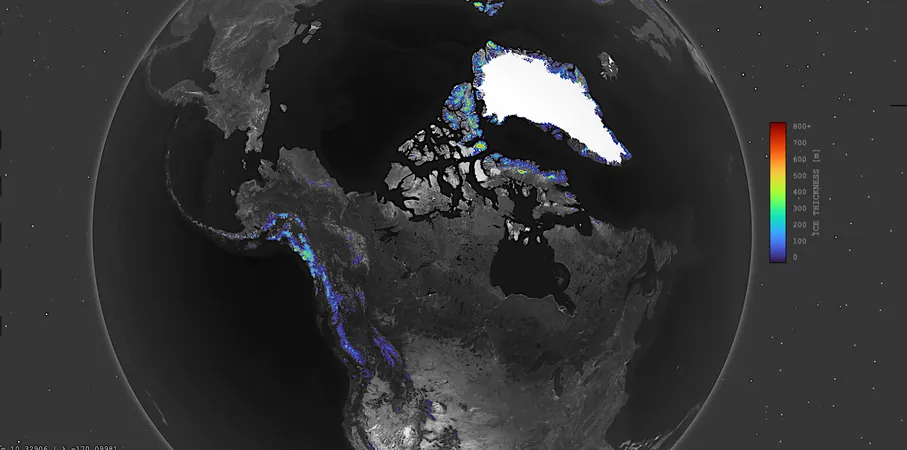
Unlocking the Secrets of Distant Worlds: High-Resolution Spectroscopy in Exoplanet Atmosphere Studies
2025-05-05
Author: Nur
Exploring the Mysteries of Exoplanet Atmospheres
The quest to understand the atmospheres of exoplanets is rapidly becoming one of the most exciting frontiers in space exploration. As astronomers gaze into the depths of the universe, they are not just looking for planets; they are hunting for clues about distant worlds that may harbor life.
Why Atmospheres Matter: A Window into Potential Habitability
The chemical makeup of an exoplanet's atmosphere can unveil critical information about its geology and potential for life. Molecules like water vapor, oxygen, and methane have long been suggested as telltale signs that life could exist or once existed on these remote planets.
Revolutionary Advances in Spectroscopy
In recent years, ground-based high-resolution spectroscopic instruments have made significant strides in analyzing these distant atmospheres. High-resolution transmission spectroscopy stands out as a powerful method, enabling scientists to investigate not only gas giants but also smaller, Earth-like planets.
A Molecular Goldmine: What Have We Discovered?
Using this cutting-edge technique, astronomers have already detected a variety of molecules including carbon monoxide, water, titanium oxide, and even signs of ammonia and methane. As we look to the future, there’s immense potential for these instruments to detect biologically significant molecules in Earth-like atmospheres, particularly molecular oxygen.
Breaking Down the Numbers: A Focus on Molecular Oxygen Detection
Recent calculations indicate that to detect molecular oxygen effectively, a spectral resolution of 300,000 is crucial. This enhanced resolution can deliver results with significantly higher significance compared to lower resolutions, reducing the necessary observation time drastically, especially when facing challenging atmospheric conditions.
A New Era in Exoplanet Studies: The Future Looks Bright
Exciting times lie ahead as we enhance our ability to study planetary atmospheres across the universe. Current instrumentation is already capable of detecting key molecules involved in biological processes on Earth, and the ongoing developments promise to refine our search for life beyond our own planet. With tools in hand, scientists are closing the gap between imagination and reality in the pursuit of understanding our cosmic neighbors.





 Brasil (PT)
Brasil (PT)
 Canada (EN)
Canada (EN)
 Chile (ES)
Chile (ES)
 Česko (CS)
Česko (CS)
 대한민국 (KO)
대한민국 (KO)
 España (ES)
España (ES)
 France (FR)
France (FR)
 Hong Kong (EN)
Hong Kong (EN)
 Italia (IT)
Italia (IT)
 日本 (JA)
日本 (JA)
 Magyarország (HU)
Magyarország (HU)
 Norge (NO)
Norge (NO)
 Polska (PL)
Polska (PL)
 Schweiz (DE)
Schweiz (DE)
 Singapore (EN)
Singapore (EN)
 Sverige (SV)
Sverige (SV)
 Suomi (FI)
Suomi (FI)
 Türkiye (TR)
Türkiye (TR)
 الإمارات العربية المتحدة (AR)
الإمارات العربية المتحدة (AR)